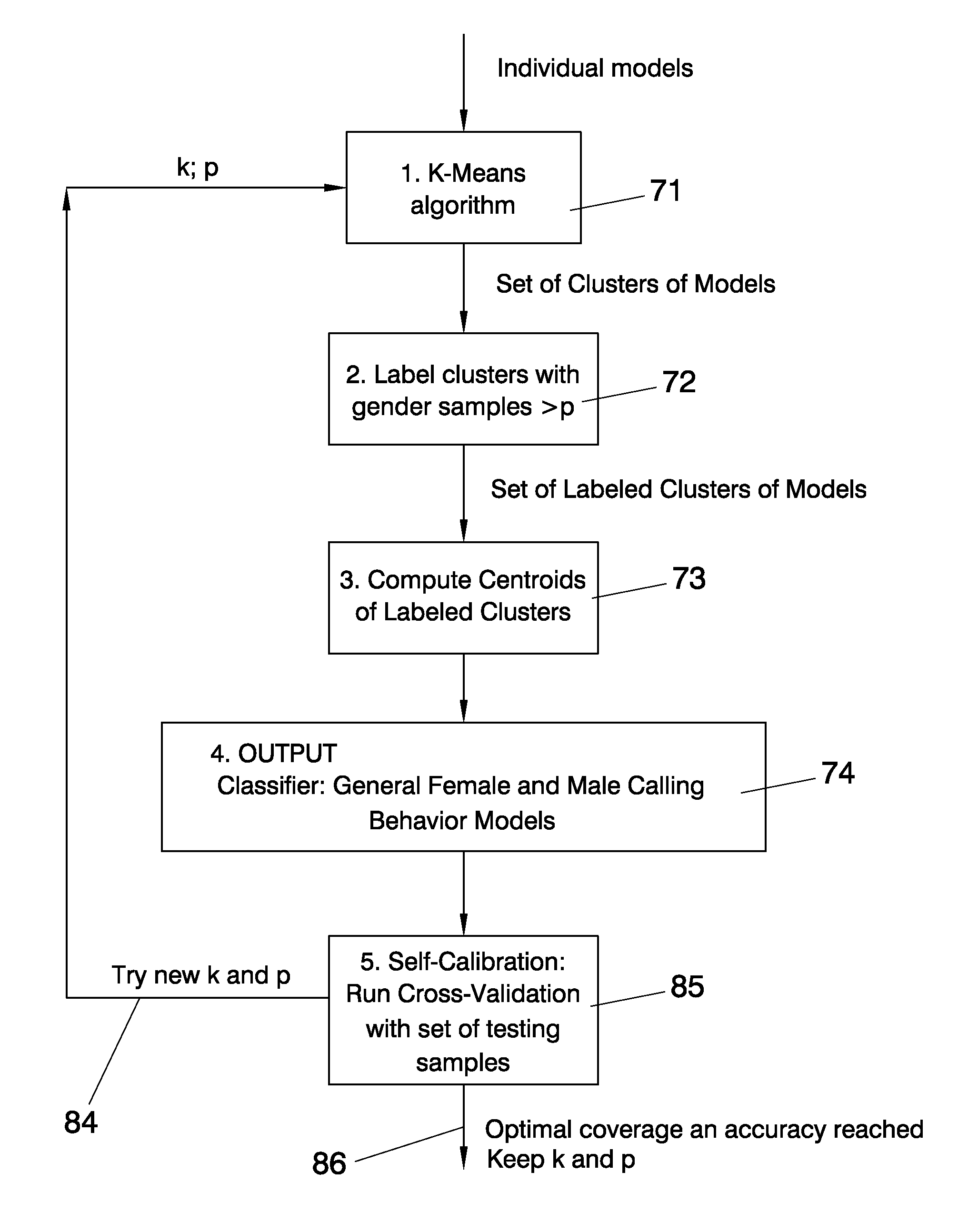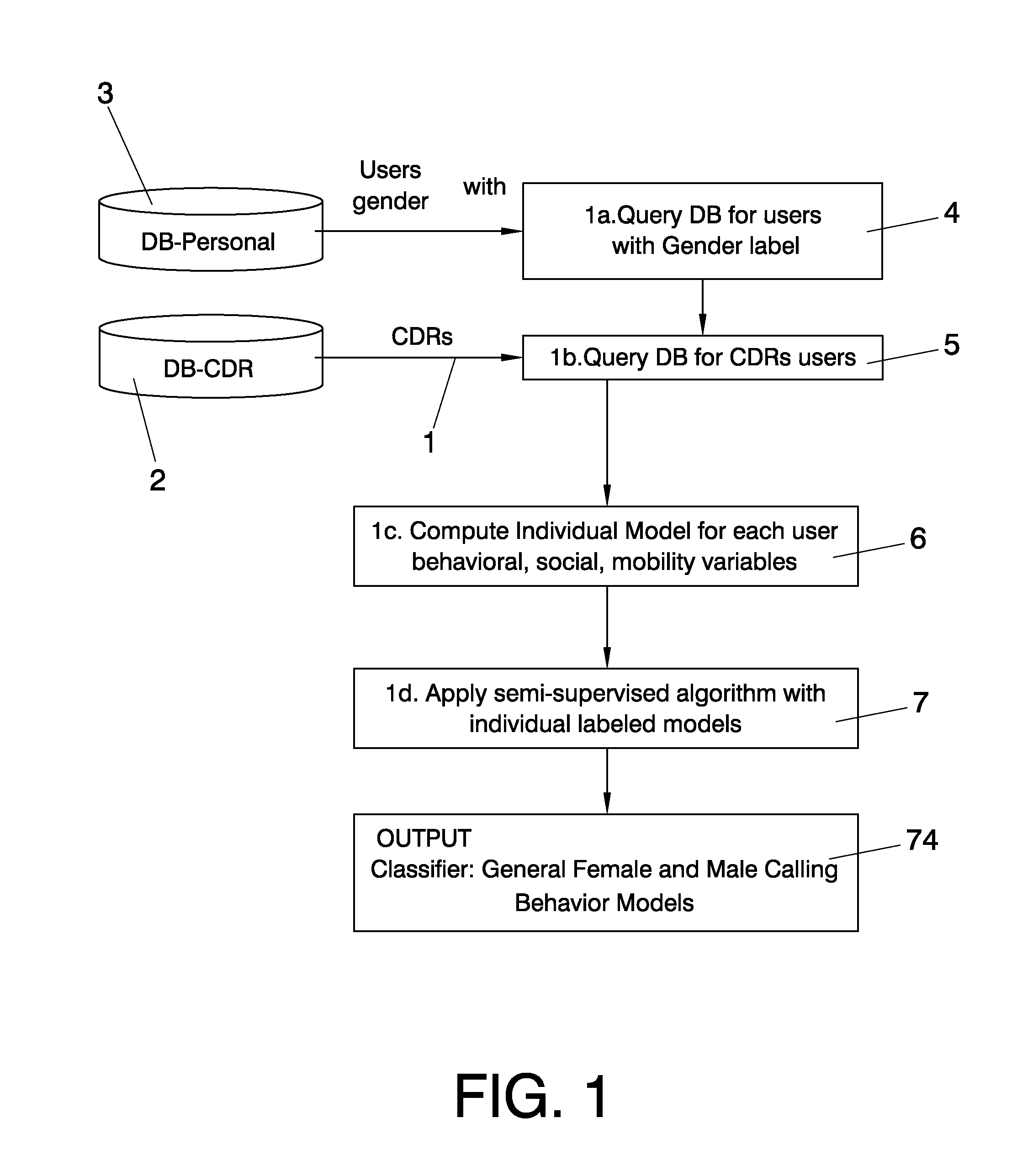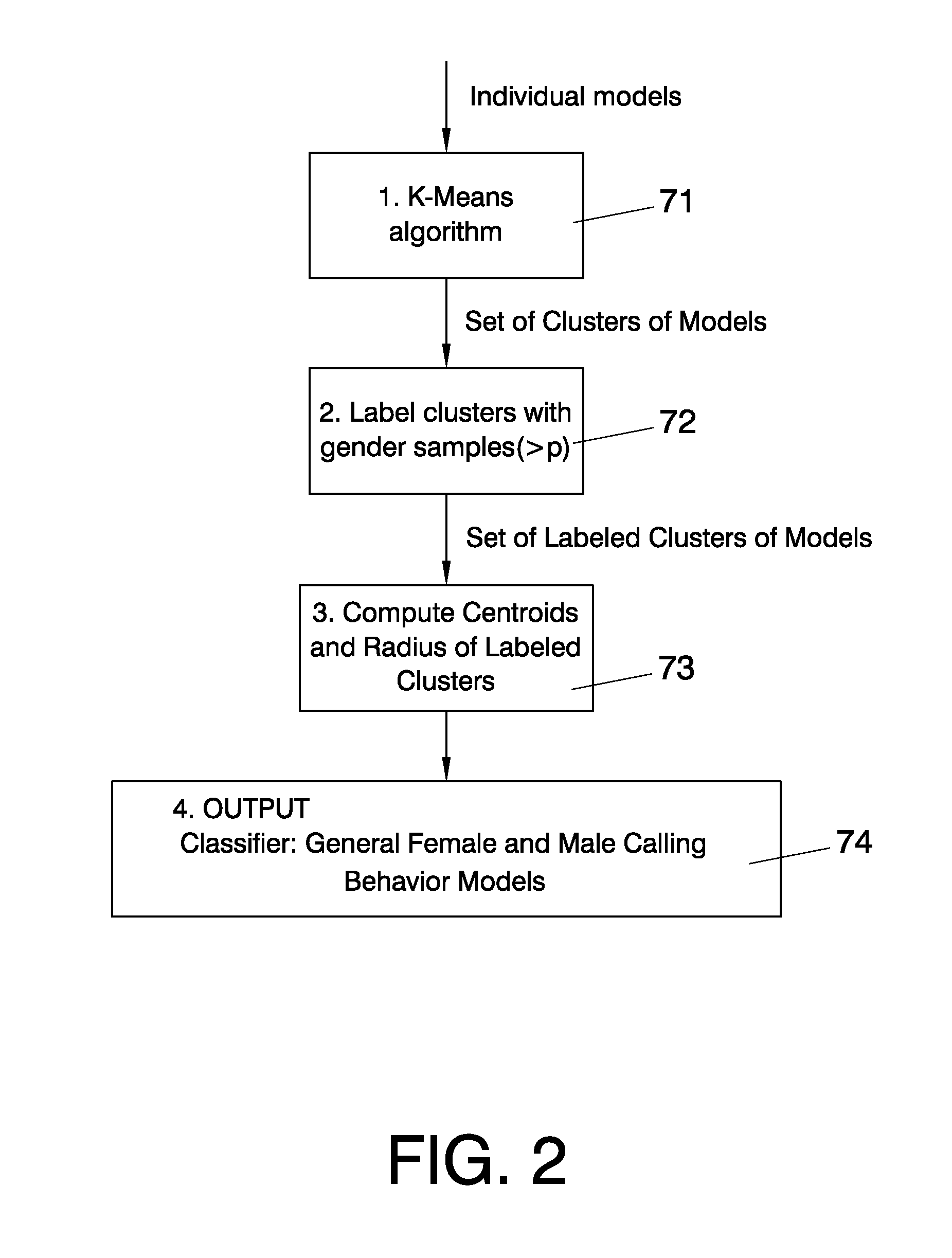Method for gender identification of a cell-phone subscriber
a cell-phone subscriber and gender identification technology, applied in the field of gender identification, can solve the problems of only feasible, inability to apply cell phone networks, and inability to use pictures or images,
- Summary
- Abstract
- Description
- Claims
- Application Information
AI Technical Summary
Problems solved by technology
Method used
Image
Examples
Embodiment Construction
[0024]Here below a practical implementation in accordance to an embodiment of the invention are described.
[0025]The method proposed consists of two main parts: (I) computation of what constitutes general female and male calling behaviour, using an algorithm; and (II) using the general model to identify the gender of a subscriber by solely using its set of CDRs:
[0026]I. Gender Model:
[0027]This part focuses on computing a general model of female and male behaviour exclusively from calling detail records, CDRs, using an algorithm.
[0028]The step of constructing the general model may comprise a minimum percentage requirement of female and male instances of subscribers who their gender is already known, and the algorithm does not label groups under said minimum percentage requirement.
[0029]Each subscriber from the initial set of subscribers whose gender is known is modelled by computing three variable sets from the CDRs: behavioural, social and mobility variables. These models are then us...
PUM
 Login to View More
Login to View More Abstract
Description
Claims
Application Information
 Login to View More
Login to View More - R&D
- Intellectual Property
- Life Sciences
- Materials
- Tech Scout
- Unparalleled Data Quality
- Higher Quality Content
- 60% Fewer Hallucinations
Browse by: Latest US Patents, China's latest patents, Technical Efficacy Thesaurus, Application Domain, Technology Topic, Popular Technical Reports.
© 2025 PatSnap. All rights reserved.Legal|Privacy policy|Modern Slavery Act Transparency Statement|Sitemap|About US| Contact US: help@patsnap.com



